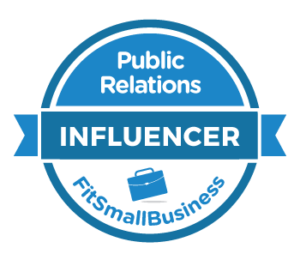I enjoy Arthur Brisbane’s Public Editor column in the NY Times, a feature that does a post mortem each week on the paper’s editorial decisions and reporting.
It is a forum that lets him and the readers vent a bit and also get reaction from the editorial, management and reporting teams. The column really shows how reporting sausage gets made, as it is not afraid to ask the tough questions; and the light it shines is not always a warm and bathing glow. The Public Editor shows the newspaper’s commitment to excellence and transparency, and is one of the reasons I love the paper.
I suppose it was only a matter of time before Brisbane got around to PR, and I saw that he had recently when Tom Bebbington alerted me via a tweet. The very title “PR Professionals, Bane or Boon?” got my hackles up (OK, can someone please explain hackles are). My readers know I am sensitive about how PR is portrayed in the media, and the very thought that an entire profession can be a bane!
Despite the title, Brisbane seemed to show an open mind in his musings about PR’s proper role in reporting in this piece, and graciously asked for feedback from the PR field about this (more on this below).
The latest column refers to an earlier article that prompted lots of reaction from the PR crowd, One can see why the earlier story caused a stir. In that one Brisbane revealed an anti-PR bias and defended what I feel is an overly aggressive NY Times policy regarding the PR field.
He took consumer tech reviewer David Pogue to task for getting paid to appear at a PR event. Although Pogue is a freelancer, and might not be bound by the same rules as Times reporters (standards governing freelancers vs. employees were covered in an earlier column, and Brisbane talks about it a bit here), Pogue has since agreed to discontinue the practice.
I share my thoughts on the eipsode below; the text in italics are exceprts from the original story:
..the speech flagrantly violates the prohibition against giving advice at paid P.R. conferences.
Maybe it is just me, but I fail to see how speaking fees from a general PR entity (in this case, Ragan, a publisher) can corrupt the process of reporting on the specific people, companies or issues covered in news stories.
Moreover, I think it is a little silly to treat the PR profession as a separate class. While It makes all the sense in the world to have rules that avoid conflicts of interest – my feeling is that separate rules are not nescessary for an entire field – why not throw lobbyists in there too, politicians, sports figures, and celebrities? We should be pretty well covered by rules that say, for example, that reporters should not accept gifts, meals, etc.
…Times readers deserve to be assured that journalists don’t get too cozy with the P.R. professionals who strive to influence coverage. A virtual army of publicists, media specialists and others stands ready every day to infiltrate the news with stories that help their employers.
The above statement makes PR sound rather dark and evil, doesn’t it?
For The Times, keeping the appropriate distance is important and the paper was wise to curb whatever P.R.advising the peripatetic Pogue has been doing.
Anyone who reads Pogue knows that he giveth as well as taketh away in his reviews, they can be pretty scathing; regardless of all the teeth gnashing over conflicts, he is fair (see my earlier post about this, and previous conflict of interest charges against Pogue made by the Public Editor).
Please see below for the questions Brisbane asks of the PR field in the more recent story (in italics) and my answers:
What are the benefits that publicists and P.R. professionals can provide to The Times? Are there any problems?
PR plays an important role in the production of news by acting as information providers, and by helping to connect reporters with information and sources. As Brisbane wrote: Pogue explains that, as a reviewer of new gadgets, there is no comprehensive database he can rely on to learn about new stuff. Hence he relies on companies and their hired pitchmen to tell him about new products.
The real PR pros are industry specialists who go beyond connecting sources and flogging news and products; we alert the media to trends, and suggest interesting story angles and opportunities.
This is at no cost to the journalist or publication; of course we do have a vested interest. If the journalist or publication is not interested, they can simply ignore us, so what really is the harm?
In terms of problems, I would think most PR people would agree that we have no interest in spamming or otherwise keeping after reporters if they tell you that they are not interested, but there are unfortunately those in our field who do not get the message; I would say that they are not the majority, although these instances do sometimes get lots of attention.
How easy or difficult is The Times to work with compared to other news organizations?
So this is where I am supposed to let off a little steam and say how I really feel, right? Here in this public forum? Or via an email to Brisbane which he might make public? Seriously (and honestly), in my experience the Times is not easier or harder to work with than most other top tier publications. It generally gets down to the relationship with the individual reporter or editor; like any other business relationship; building trust is important. Over time, you hopefully build those mutually rewarding relationships. Some choose not to work with PR, and that is fine too.


